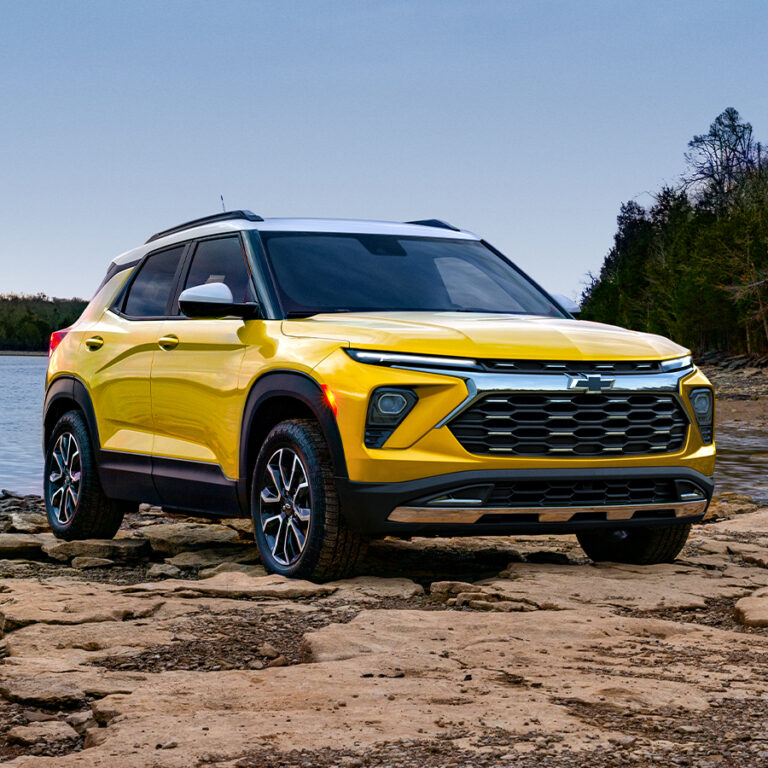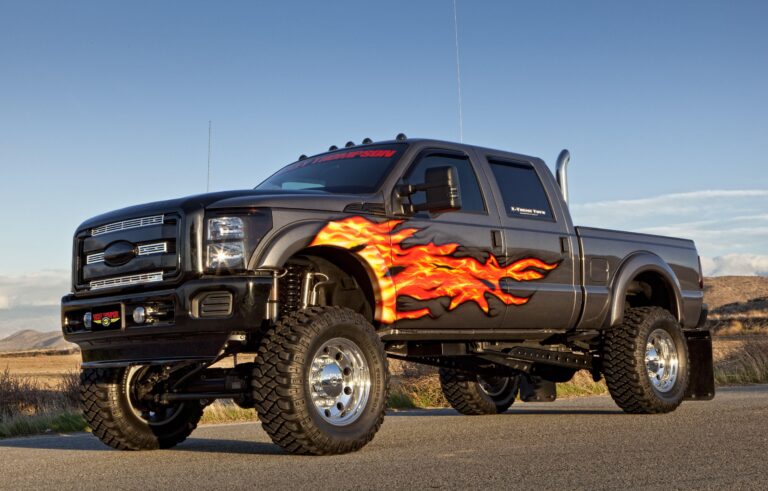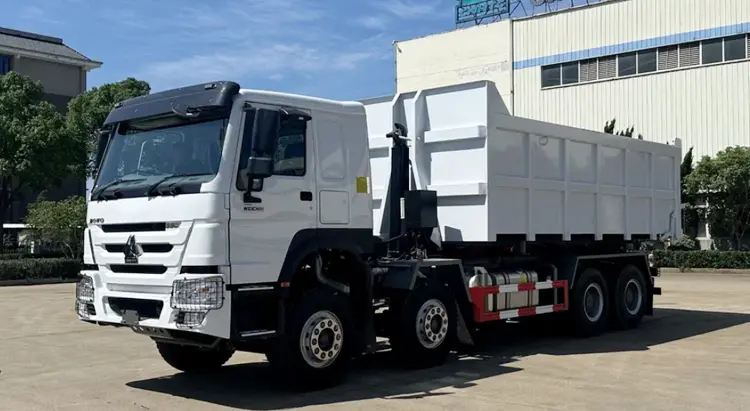Best Snow Plow For 1/2 Ton Pickup
Best Snow Plow For 1/2 Ton Pickup cars.truckstrend.com
Winter brings with it a unique set of challenges, and for many homeowners and small businesses, heavy snowfall is at the top of that list. While larger trucks are often associated with commercial snow removal, the versatile 1/2 ton pickup truck stands as a popular choice for personal and light-duty commercial plowing. These trucks, including popular models like the Ford F-150, Chevrolet Silverado 1500, Ram 1500, and Toyota Tundra, offer a blend of daily drivability and sufficient capability. However, selecting the "best" snow plow for a 1/2 ton pickup isn’t as simple as picking the biggest blade; it’s a careful balance of the truck’s capabilities, the plow’s features, and the intended use.
This comprehensive guide will delve into the nuances of choosing the ideal snow plow for your 1/2 ton pickup, ensuring you make an informed decision that maximizes efficiency and protects your vehicle investment.
Best Snow Plow For 1/2 Ton Pickup
Understanding 1/2 Ton Pickups and Plow Compatibility
Before even looking at plow models, it’s crucial to understand the limitations and capabilities of your 1/2 ton truck. The "1/2 ton" designation refers to the truck’s payload class, not its exact payload capacity, which varies significantly by manufacturer, year, trim, and options.
Payload Capacity and Axle Ratings
The most critical factor is your truck’s Gross Vehicle Weight Rating (GVWR) and, more specifically, its Front Gross Axle Weight Rating (FGAWR). These numbers, found on the sticker inside your driver’s side door jamb, dictate how much weight your truck’s front axle can safely bear. A snow plow adds significant weight directly over the front axle, often ranging from 300 to 800 pounds, plus the weight of the mounting hardware. Exceeding the FGAWR can lead to:
- Safety Hazards: Compromised steering, braking, and handling.
- Accelerated Wear: Excessive strain on suspension components (shocks, springs), steering components, and tires.
- Potential Warranty Issues: Manufacturers may void warranties if damage is directly attributed to overloading.

Suspension and Frame Strength
While 1/2 ton trucks are robust, their stock suspension is designed for a balance of ride comfort and hauling capability, not necessarily heavy, front-mounted implements. Plowing puts immense stress on the truck’s frame and suspension. Many owners opt for suspension upgrades like Timbren SES (Suspension Enhancement Systems), airbags, or heavier-duty coil springs to better manage the plow’s weight and absorb impacts, especially for frequent or demanding use. These upgrades help level the truck and prevent excessive "sag."
Weight Distribution and Ballast
Adding weight to the front of your truck with a plow requires counterbalancing weight in the truck bed. This ballast helps improve traction on the rear wheels (especially for 4×4 trucks) and re-establishes a more balanced weight distribution, reducing strain on the front axle and improving overall handling. A common rule of thumb is to add ballast equal to 1.5 to 2 times the plow’s weight, positioned directly over or slightly ahead of the rear axle.
Types of Snow Plows Suitable for 1/2 Ton Pickups
While the commercial market offers a vast array of plow types, the choices for 1/2 ton pickups are more specialized, focusing on weight and maneuverability.
-
Light-Duty Straight Blade Plows:
- Description: These are the most common and often the best choice for 1/2 ton trucks. They feature a single, fixed-angle blade.
- Pros: Lighter weight, simpler design, lower cost, excellent for pushing snow straight ahead or angling it to the side.
- Cons: Less versatile for cutting through deep drifts or back-dragging in tight spaces compared to V-plows.
- Ideal Use: Residential driveways, small parking lots, light commercial applications.
-
Light-Duty V-Plows:
- Description: These plows have two blades that can be angled independently, forming a "V" shape to cut through snow, a straight blade, or a "scoop" shape for piling.
- Pros: Highly versatile, excellent for breaking through drifts, superior for back-dragging, can move more snow efficiently.
- Cons: Significantly heavier and more expensive than straight blades, limiting options for 1/2 ton trucks. Only specific, purpose-built light-duty V-plows are suitable.
- Ideal Use: Deeper snow, more complex plowing tasks, light commercial use where versatility is key.
-
Personal/Homeowner Plows:
- Description: Often lighter-duty versions of straight blades, sometimes with manual lift or less robust hydraulics. Examples include Meyer HomePlow.
- Pros: Very lightweight, often less expensive, easy to install/remove, ideal for occasional residential use.
- Cons: Less durable for heavy or frequent use, typically smaller, may not handle very deep snow efficiently.
- Ideal Use: Long driveways, light snowfall, occasional use.
Key Considerations When Choosing the Best Plow
Making the right choice involves weighing several factors beyond just the type of plow.
- Plow Weight (Critical!): This cannot be stressed enough. Always check the plow’s operating weight (including mounting hardware) and compare it against your truck’s FGAWR. Aim for a plow that keeps you comfortably below your FGAWR.
- Blade Material:
- Steel: More durable, heavier, excellent for breaking through hard snow and ice. Can be prone to rust.
- Poly (Polyethylene): Lighter, non-stick surface reduces friction (meaning less horsepower needed to push snow), quieter operation, less prone to rust. Can be less durable than steel in very harsh conditions.
- Blade Width: Common widths for 1/2 tons range from 6.5 to 7.5 feet. A wider plow can clear more snow per pass, but it also adds weight and can reduce maneuverability. Ensure the plow is wider than your truck’s tires when angled to avoid leaving a strip of unplowed snow.
- Mounting System: Look for quick-attach/detach systems (e.g., Fisher Minute Mount, Western UltraMount) that allow you to easily remove the plow when not in use, reducing wear and tear on your truck.
- Hydraulics and Controls: Most modern plows use electric over hydraulic systems, which are efficient and responsive. In-cab controls should be ergonomic and easy to use, ideally with a joystick or push-button pad.
- Lights: Essential for safe night plowing. Most plows come with their own dedicated lighting systems that integrate with the truck’s electrical system.
- Deflection System:
- Trip Edge: Only the bottom cutting edge trips back when hitting an obstruction, allowing the rest of the blade to remain upright. Good for protecting the plow and truck.
- Full Trip Blade: The entire blade pivots forward when hitting an obstruction. Offers maximum protection but can be less stable on rough terrain.
- Cutting Edge Material: Steel is standard, but poly or carbide edges are available for specific applications, offering less wear on surfaces or greater durability.
- Budget: Plow prices vary significantly. Factor in the cost of the plow, installation (if professional), and any necessary truck upgrades (suspension, heavier battery).
- Intended Use & Snowfall: How often will you plow? How much snow do you typically get? A light-duty plow is fine for occasional, moderate snow, while a more robust "light commercial" plow is better for frequent, heavy snowfall.
Top Brands and Recommended Models for 1/2 Ton Pickups
Several reputable manufacturers design plows specifically with the 1/2 ton truck’s limitations in mind.
- Western HTS™ (Half-Ton Straight): A popular choice, specifically engineered for 1/2 ton trucks. It’s a lightweight, full-size straight blade (typically 7’6" wide) known for its durability and quick-attach system.
- Fisher HT Series™: Fisher’s equivalent to the Western HTS, offering similar features and reliability, designed for lighter trucks.
- Meyer Drive Pro™ / Meyer HomePlow: Meyer offers the Drive Pro series as a robust, yet lighter, straight blade for 1/2 tons, while their HomePlow series is excellent for residential users due to its lighter weight and ease of use.
- SnowEx 7600LT / 8000LT: SnowEx’s "Light Truck" series plows are designed to be lightweight yet capable, often featuring poly blades for reduced friction and weight.
- BOSS HTX Series (Straight and V-Plow): BOSS offers the HTX straight blade and a compact HTX V-plow, both designed with lighter trucks in mind. The HTX V-plow is one of the few V-plow options genuinely viable for some 1/2 ton applications due to its optimized weight.
When considering these, always double-check the exact model’s weight against your truck’s specifications.
Installation and Maintenance Tips
Proper installation and routine maintenance are key to the longevity of both your plow and your truck.
- Professional Installation: While some mechanically inclined individuals can DIY, professional installation is highly recommended, especially for your first plow. This ensures correct wiring, hydraulic connections, and proper frame mounting, which are critical for safety and performance.
- Electrical System: Ensure your truck’s battery and charging system are robust enough to handle the plow’s electrical demands (hydraulics, lights). A dual battery setup or an upgraded alternator might be beneficial for heavy use.
- Add Ballast: As discussed, add sufficient weight to your truck bed (sandbags, concrete blocks, water barrels) positioned over or slightly forward of the rear axle. This improves traction and balances the load.
- Pre-Season Check: Before the first snowfall, inspect all hydraulic lines for leaks, check fluid levels, test all electrical connections and lights, inspect the cutting edge for wear, and grease all moving parts.
- During Plowing: Avoid hitting obstructions. Plow in layers for deep snow. Use 4-wheel drive. Drive slowly and deliberately.
- Post-Season Care: Clean the plow thoroughly, especially removing salt and grime. Grease all pivot points and hydraulic cylinders. Inspect for damage. Store the plow in a dry location, ideally on its stand, with the hydraulics retracted. Consider painting any exposed rust spots to prevent further corrosion.
Challenges and Solutions
Plowing with a 1/2 ton truck comes with its own set of challenges, but most have practical solutions.
- Challenge: Overloading and Front-End Sag.
- Solution: Strictly adhere to your truck’s FGAWR. Choose the lightest suitable plow. Invest in suspension enhancements (Timbrens, airbags) to prevent sag and improve ride quality.
- Challenge: Reduced Traction (Rear Wheels).
- Solution: Always use adequate ballast in the truck bed. Engage 4-wheel drive. Ensure you have good quality winter tires with aggressive tread.
- Challenge: Reduced Visibility.
- Solution: Ensure plow lights are properly aimed and functioning. Keep your truck’s windshield clear. Be aware of the plow’s position, especially in tight turns. Some plows offer "attack angle" adjustments that can help with visibility.
- Challenge: Accelerated Wear and Tear on Truck.
- Solution: Do not exceed your truck’s ratings. Perform regular maintenance on both the truck and the plow. Drive responsibly, avoiding high speeds or impacts. Consider a dedicated plow truck if your needs escalate to heavy commercial work.
Best Snow Plow For 1/2 Ton Pickup: Price Table
Please note that prices are approximate and can vary significantly based on location, dealer, promotions, specific features, and installation costs. Always get a detailed quote from a local dealer.
| Brand/Model | Type | Blade Material | Approx. Plow Weight (lbs) | Blade Width (ft) | Key Features | Approx. Price Range (Plow Only, USD) |
|---|---|---|---|---|---|---|
| Meyer HomePlow | Straight | Steel | 250 – 300 | 6.8 – 7.5 | Personal use, easy attach, remote control | $1,800 – $3,000 |
| Meyer Drive Pro 6’8" | Straight | Steel | 450 – 500 | 6.7 | Commercial-grade light duty, full-trip blade | $4,500 – $5,500 |
| Western HTS | Straight | Steel | 480 – 520 | 7.5 | Half-ton specific, UltraMount, trip-edge | $5,000 – $6,000 |
| Fisher HT Series | Straight | Steel | 470 – 510 | 7.5 | Half-ton specific, Minute Mount 2, trip-edge | $5,000 – $6,000 |
| SnowEx 7600LT | Straight | Poly | 450 – 480 | 7.5 | Lightweight poly blade, full-trip, flared wings | $4,800 – $5,800 |
| BOSS HTX Straight | Straight | Steel/Poly | 400 – 550 | 6.5 – 7.5 | SmartLight 3, SmartHitch 2, trip-edge | $4,800 – $6,000 |
| BOSS HTX V-Plow | V-Plow | Steel/Poly | 550 – 650 | 7.5 | Light-duty V-plow, independent wing control | $6,500 – $7,800 |
Note: Prices typically do not include installation, which can add $500 – $1,500 depending on complexity and labor rates.
Frequently Asked Questions (FAQ)
Q1: Can I put any snow plow on my 1/2 ton pickup?
A1: Absolutely not. The most critical factor is the plow’s weight in relation to your truck’s Front Gross Axle Weight Rating (FGAWR). Overloading your truck can lead to serious safety issues, accelerated wear, and potentially void your warranty. Always choose a plow specifically designed for 1/2 ton applications.
Q2: Do I need to upgrade my truck’s suspension for a snow plow?
A2: While not always strictly required for light-duty plows, suspension upgrades (like Timbren SES, airbags, or heavier springs) are highly recommended. They help manage the added weight, prevent excessive front-end sag, improve handling, and reduce wear and tear on your truck’s components, especially for frequent plowing.
Q3: How much ballast (weight) do I need in my truck bed?
A3: A common guideline is to add ballast equal to 1.5 to 2 times the plow’s weight. This helps counterbalance the front-mounted plow, improves rear-wheel traction, and maintains better overall vehicle balance. Position the ballast over or slightly ahead of the rear axle.
Q4: Is a V-plow suitable for a 1/2 ton pickup?
A4: Most V-plows are too heavy for 1/2 ton trucks. However, some manufacturers (like BOSS with their HTX V-plow) offer lighter-duty V-plows specifically engineered for some 1/2 ton applications. Always verify the weight and your truck’s FGAWR.
Q5: What’s the difference between a trip-edge and a full-trip blade?
A5: A trip-edge plow only has the bottom cutting edge pivot backward when hitting an obstruction, while the rest of the blade remains upright. A full-trip blade allows the entire plow blade to pivot forward when hitting an obstruction. Trip-edge is generally preferred for heavier-duty applications as it maintains more snow-carrying capacity, while full-trip offers maximum protection against impacts.
Q6: Can I install the snow plow myself?
A6: While technically possible for those with strong mechanical skills and the right tools, professional installation is highly recommended. It ensures correct wiring, hydraulic connections, and proper frame mounting, which are crucial for safety, performance, and preventing damage to your truck.
Q7: Will plowing void my truck’s warranty?
A7: Plowing can potentially void parts of your truck’s warranty if damage is directly attributed to overloading, improper installation, or operating outside of the manufacturer’s recommendations. Always check your truck’s owner’s manual and consult with your dealer. Using a plow specifically designed for 1/2 ton trucks and staying within weight limits significantly reduces this risk.
Conclusion
Choosing the best snow plow for your 1/2 ton pickup is a decision that requires careful consideration of your truck’s specifications, your plowing needs, and the features of available plow models. The key takeaway is to prioritize weight compatibility above all else to ensure the safety, longevity, and performance of your vehicle.
By understanding your truck’s capabilities, selecting a purpose-built light-duty plow, investing in appropriate suspension enhancements, and committing to regular maintenance, your 1/2 ton pickup can transform into an efficient and reliable winter workhorse, ready to tackle whatever the season throws your way. A well-chosen plow not only saves you time and effort but also provides the peace of mind that comes with being prepared for winter’s challenges.





